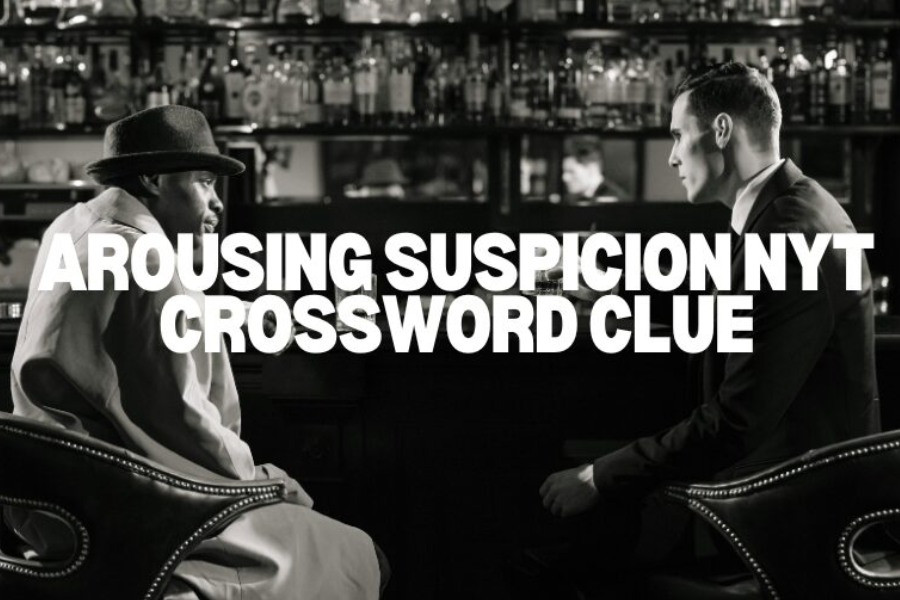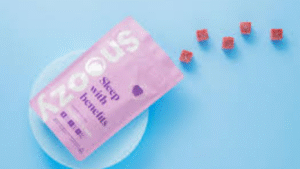Raising Doubt: Dissecting a Typical NYT Crossword Solitaire
The New York Times Crossword Puzzle is a beloved ritual for many. Each week, puzzle enthusiasts gather around their tables, armed with pencils and a thirst for knowledge. It’s more than just filling in boxes; it’s solving clues that challenge our vocabulary and wit.
Among the myriad of clues lies one particularly intriguing entry: “arousing suspicion nyt.” This phrase often leads players down a winding path of words and meanings. But what does it really hint at? As we dive deeper into this clue’s significance within the NYT articles, we’ll uncover layers of meaning that extend beyond mere crossword puzzles. Join us as we explore what makes “arousing suspicion” such an essential piece of the puzzle—both on paper and in discussions!
The Clue: Arousing Suspicion NYT:
The world of the New York Times Crossword Puzzle is like a treasure chest for word enthusiasts. Every clue offers a hint, a puzzle waiting to be unraveled. One intriguing clue that often pops up is “arousing suspicion nyt.”
This phrase invokes curiosity and invites players into a deeper level of thinking. It’s not just about finding synonyms; it’s about understanding context and tone. When you see this clue, your mind races through possibilities.
Players might think of things that seem off or peculiar. Perhaps something feels shady or untrustworthy? The essence lies in conveying doubt without being overly dramatic.
Navigating through these layers can lead to surprising answers, one of which is simply “fishy.” This term encapsulates the very notion of suspicion—when something seems amiss in an otherwise calm sea. Each crossword interaction becomes more than just filling blanks; it’s an exploration into language itself.
The Challenge of Crossword Puzzles:
Crossword puzzles are more than a pastime; they are a mental exercise that sharpens the mind and enhances vocabulary. The New York Times Crossword Puzzle is particularly famous for its clever and sometimes cryptic clues that require solvers to think outside the box.
When faced with a clue like “arousing suspicion nyt,” solvers must engage in lateral thinking. This type of thinking involves looking at the problem from different angles and considering various interpretations of the clue. It’s not just about knowing the words; it’s about understanding the nuances and subtleties of language.
For instance, “arousing suspicion nyt” might lead one to think of words like “dubious,” “shady,” or “questionable.” However, the challenge lies in finding the word that fits perfectly within the given crossword grid. This often requires solvers to think beyond the obvious and consider less direct synonyms.
The Intrigue of “Fishy”:
The final answer to the clue “arousing suspicion nyt” is “fishy.” This term perfectly captures the essence of suspicion. When something is described as “fishy,” it implies that there is something off about it, something that doesn’t quite add up.
The word “fishy” is often used in everyday conversation to describe situations or stories that seem dubious. For example, if someone tells a story that seems too good to be true, you might say, “That sounds fishy to me.” It’s a term that conveys a sense of skepticism and doubt.
In the context of a crossword puzzle, “fishy” is a clever and concise answer to the clue “arousing suspicion nyt.” It’s a word that fits neatly into the crossword grid and captures the essence of the clue without being too obvious.
Why “Arousing Suspicion” Matters:
The clue “arousing suspicion nyt” is more than just a phrase in a crossword puzzle; it’s a reflection of the human experience. Suspicion is a natural part of life. We all encounter situations that make us feel uneasy or doubtful. Whether it’s a story that doesn’t quite add up or a situation that seems too good to be true, suspicion is a common response.
In literature and film, suspicion is a powerful tool for creating tension and intrigue. Mystery novels and thrillers often revolve around characters who are trying to uncover the truth behind suspicious circumstances. The feeling of suspicion keeps readers and viewers on the edge of their seats, eager to find out what happens next.
In real life, suspicion can be a protective mechanism. It can help us avoid scams and deceitful situations. However, it’s important to balance suspicion with open-mindedness. Not everything that seems suspicious is necessarily bad, and jumping to conclusions can lead to misunderstandings.
The Role of Context:
One of the key aspects of solving crossword puzzles is understanding the context of the clues. The same word can have different meanings depending on the context in which it is used. For example, the word “bank” can refer to a financial institution or the side of a river. In the case of the clue “arousing suspicion nyt,” the context is crucial for finding the correct answer.
The New York Times Crossword Puzzle often uses clues that play on multiple meanings of words. This adds an extra layer of complexity to the puzzle and makes it more challenging for solvers. Understanding the context helps solvers narrow down the possible answers and find the word that fits best within the crossword grid.
The Satisfaction of Solving:
There is a unique satisfaction that comes from solving a challenging crossword puzzle. When you finally figure out the answer to a tricky clue, it feels like a moment of triumph. The clue “arousing suspicion nyt” is one of those clues that can be particularly satisfying to solve.
When you realize that the answer is “fishy,” it’s a moment of clarity that makes all the effort worthwhile. It’s a reminder of why so many people love crossword puzzles—they challenge our minds and reward us with a sense of accomplishment.
Crossword Puzzles in Popular Culture:
The New York Times Crossword Puzzle is more than just a puzzle; it’s a cultural icon. It has been featured in movies, TV shows, and books, and it has a dedicated following of fans who eagerly await each new puzzle.
The puzzle’s popularity has inspired countless solvers to try their hand at creating their own crossword puzzles. It has also spawned a variety of online communities where solvers can share tips, discuss clues, and celebrate their love of crosswords.
The clue “arousing suspicion nyt” is just one example of the many clever and intriguing clues that make the New York Times Crossword Puzzle so beloved. It’s a reminder of the puzzle’s ability to engage and challenge solvers in a way that few other activities can.
Conclusion:
The New York Times Crossword Puzzle is a beloved tradition for many, offering a unique blend of challenge and satisfaction. The clue “arousing suspicion nyt” exemplifies the puzzle’s ability to engage solvers in lateral thinking and wordplay. The final answer, “fishy,” captures the essence of suspicion and provides a satisfying resolution to the clue.
Crossword puzzles are more than just a pastime; they are a mental exercise that sharpens the mind and enhances vocabulary. They invite us to explore the nuances of language and engage in creative thinking. Whether you are a seasoned solver or a newcomer to the world of crosswords, the New York Times Crossword Puzzle offers endless opportunities for discovery and enjoyment.
So next time you encounter the phrase “arousing suspicion” in your daily life—or while tackling an NYT crossword—remember: if it feels fishy, trust your instincts!











Post Comment